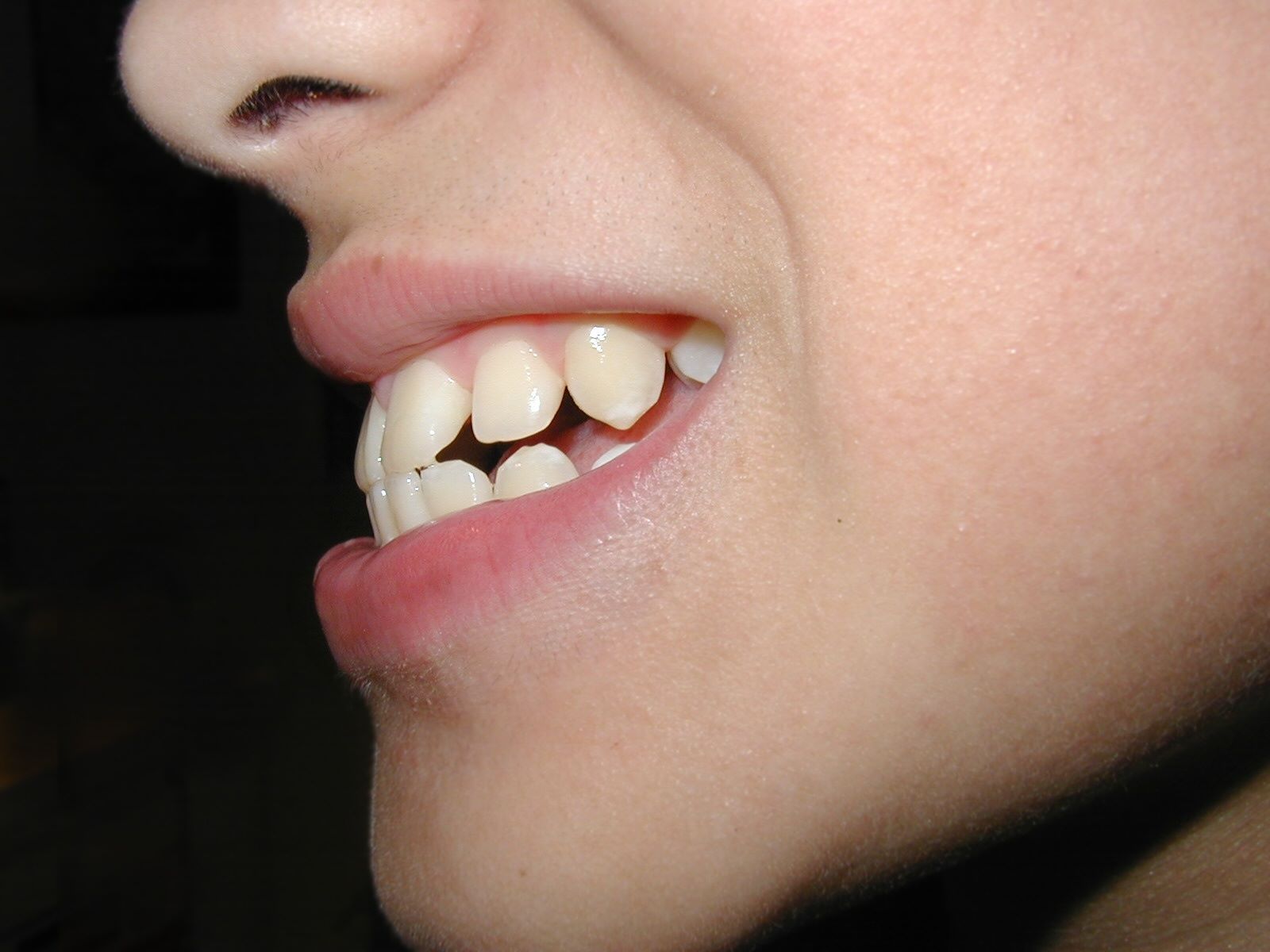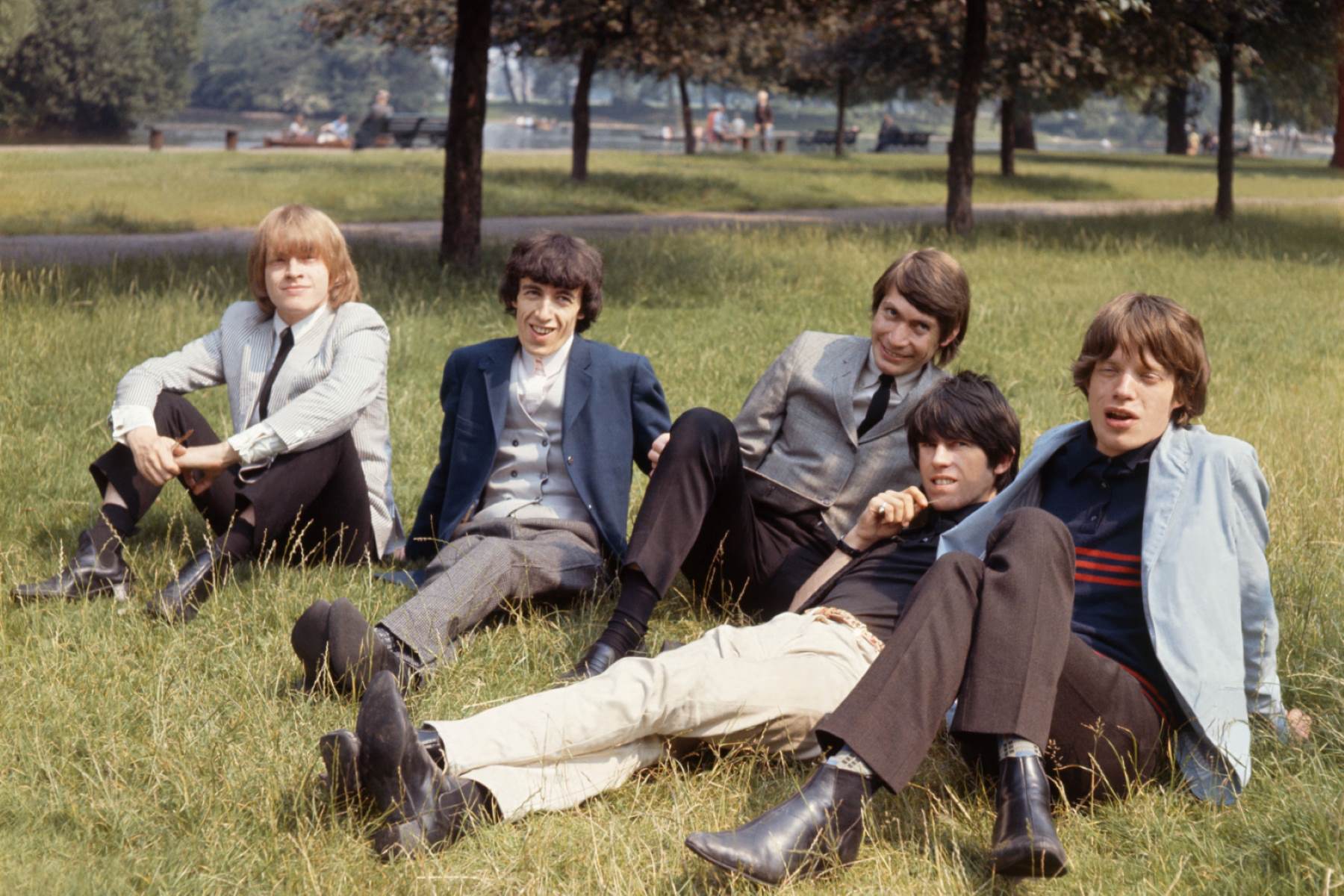Home>Health and Wellness>The Truth About Underbites And Overbites: Signs You Never Knew To Look For


Health and Wellness
The Truth About Underbites And Overbites: Signs You Never Knew To Look For
Published: January 14, 2024
Learn about the signs and symptoms of underbites and overbites and how they can impact your health and wellness. Discover what to look for and how to address these common dental issues.
(Many of the links in this article redirect to a specific reviewed product. Your purchase of these products through affiliate links helps to generate commission for Regretless.com, at no extra cost. Learn more)
Table of Contents
Introduction
Underbites and overbites are common dental conditions that affect the alignment of the teeth and jaw. These conditions can have a significant impact on an individual's oral health, facial aesthetics, and overall well-being. Understanding the signs and symptoms of underbites and overbites is crucial for early detection and effective treatment.
While many people are familiar with the basic concept of underbites and overbites, there are lesser-known signs and symptoms that can indicate the presence of these conditions. By gaining a deeper understanding of these signs, individuals can seek timely intervention from dental professionals, leading to improved oral function and a confident smile.
In this article, we will delve into the lesser-known signs of underbites and overbites, shedding light on the subtle indicators that may go unnoticed. By exploring these nuances, readers will gain valuable insights into identifying these conditions early on, paving the way for proactive management and personalized treatment plans. Let's embark on a journey to uncover the truth about underbites and overbites, unveiling the signs that you never knew to look for.
Understanding Underbites and Overbites
Underbites and overbites are orthodontic conditions that involve the misalignment of the teeth and jaw. An underbite, also known as a Class III malocclusion, occurs when the lower front teeth protrude further than the upper front teeth, creating a characteristic "bulldog" appearance. On the other hand, an overbite, or a Class II malocclusion, is characterized by the upper front teeth overlapping significantly with the lower front teeth. Both underbites and overbites can lead to functional and aesthetic concerns if left untreated.
These conditions can arise from various factors, including genetics, childhood habits (such as thumb sucking or prolonged pacifier use), and jaw irregularities. In some cases, underbites and overbites may result from skeletal discrepancies, where the size and position of the upper and lower jaws are misaligned.
Understanding the differences between underbites and overbites is crucial for accurate diagnosis and tailored treatment. While underbites often manifest as a prominent lower jaw and protruding lower teeth, overbites are characterized by an excessive vertical overlap of the front teeth. Additionally, individuals with underbites may experience challenges with biting and chewing, whereas those with overbites may be prone to speech impediments and increased wear on the lower teeth.
It's important to note that underbites and overbites can impact not only oral health but also overall well-being. These conditions may lead to temporomandibular joint (TMJ) disorders, facial asymmetry, and self-esteem issues. Therefore, early recognition and intervention are essential in addressing underbites and overbites effectively.
By gaining a comprehensive understanding of these malocclusions, individuals can proactively monitor their oral health and seek professional guidance if they suspect any irregularities in their dental alignment. With the right knowledge and awareness, individuals can take proactive steps toward achieving optimal oral function and a harmonious smile.
Common Signs of Underbites
-
Visible Misalignment: One of the most noticeable signs of an underbite is the visible misalignment of the upper and lower teeth. When the lower front teeth protrude noticeably beyond the upper front teeth, it creates a distinct discrepancy in the dental arches. This misalignment can affect the overall facial profile, leading to a visibly prominent lower jaw.
-
Difficulty Chewing: Individuals with underbites may experience challenges when biting and chewing. The misalignment of the teeth can disrupt the natural occlusal relationship, making it difficult to bite into and properly chew food. This can lead to discomfort during meal times and may even impact the individual's dietary choices.
-
Speech Impediments: Underbites can also contribute to speech impediments, particularly with pronouncing certain sounds. The malocclusion can affect the positioning of the tongue and impact speech articulation, leading to difficulties in enunciating words clearly.
-
Facial Asymmetry: In some cases, underbites can result in facial asymmetry, where one side of the face appears more prominent than the other. This asymmetry may be particularly noticeable around the chin and lower jaw area, contributing to an unbalanced facial appearance.
-
Jaw Discomfort: Individuals with underbites may experience discomfort or pain in the jaw joint (temporomandibular joint) due to the misalignment of the teeth and the resulting strain on the jaw muscles. This discomfort can manifest as jaw stiffness, clicking or popping sounds, and even limited jaw mobility.
-
Self-Esteem Concerns: The visible impact of an underbite on facial aesthetics can lead to self-esteem concerns for some individuals. The noticeable protrusion of the lower jaw and misaligned teeth may affect confidence and self-image, especially during social interactions and smiling.
Recognizing these common signs of underbites is essential for prompt intervention and tailored treatment. By being aware of these indicators, individuals can seek professional evaluation and explore orthodontic solutions to address the underlying malocclusion. Early detection and proactive management can help individuals regain oral function, alleviate discomfort, and achieve a balanced and harmonious dental alignment.
Unusual Signs of Underbites
In addition to the common indicators of underbites, there are lesser-known signs that can provide valuable insights into the presence of this malocclusion. While these signs may not be as immediately noticeable as visible misalignment or difficulty chewing, they can serve as important cues for individuals to seek professional evaluation and intervention.
-
Breathing Difficulties: Unusual signs of underbites may include breathing difficulties, particularly during sleep. The misalignment of the jaws and teeth can impact the positioning of the airway, potentially leading to obstructive sleep apnea. Individuals with underbites may experience snoring, intermittent breathing pauses during sleep, and daytime fatigue due to disrupted sleep patterns. These breathing difficulties can be indicative of the underlying impact of underbites on airway function, highlighting the need for comprehensive assessment by dental and medical professionals.
-
Chronic Jaw Tension: While jaw discomfort is a common sign of underbites, chronic tension in the jaw muscles and surrounding areas can be an unusual indicator. Individuals with underbites may experience persistent tightness and discomfort in the jaw, often accompanied by headaches and facial muscle fatigue. This chronic tension can stem from the misalignment of the teeth and the resulting strain on the jaw muscles. Identifying this unusual sign can prompt individuals to seek specialized care from orthodontic and orofacial pain experts to address the underlying causes and alleviate jaw-related discomfort.
-
Digestive Issues: Underbites can impact not only the oral cavity but also the digestive system. Unusual signs may include digestive issues such as acid reflux and difficulty in swallowing. The misalignment of the jaws and teeth can affect the natural process of chewing and swallowing food, leading to challenges in proper digestion. Individuals with underbites may experience discomfort after eating, regurgitation of food, and a sense of food getting stuck in the throat. Recognizing these digestive issues as potential indicators of underbites can prompt individuals to seek multidisciplinary care involving orthodontists and gastroenterologists to address the holistic impact of this malocclusion.
By shedding light on these unusual signs of underbites, individuals can expand their awareness of the multifaceted impact of this malocclusion. These signs serve as crucial cues for seeking comprehensive evaluation and personalized treatment to address not only the visible aspects of underbites but also their potential systemic effects. Early recognition of these unusual signs can empower individuals to take proactive steps toward achieving holistic oral health and overall well-being.
Identifying Overbites
Identifying overbites involves recognizing specific signs and symptoms that indicate the presence of a Class II malocclusion. These indicators can vary in their visibility and impact, highlighting the importance of keen observation and proactive dental assessment.
One of the primary signs of overbites is the noticeable vertical overlap of the upper front teeth over the lower front teeth. This characteristic protrusion can be visually apparent during smiling and speaking, contributing to an imbalanced dental appearance. Additionally, individuals with overbites may experience challenges with biting and chewing, as the excessive overlap can disrupt the natural occlusal relationship, leading to discomfort and functional limitations.
Another key aspect of identifying overbites is understanding their potential impact on speech articulation. Overbites can contribute to speech impediments, affecting the clarity and precision of certain sounds. Individuals may struggle with pronouncing words that require proper alignment of the upper and lower teeth, leading to speech difficulties that can impact communication and confidence.
Facial aesthetics also play a significant role in identifying overbites. The excessive vertical overlap of the front teeth can contribute to a characteristic facial profile, often characterized by a prominent upper jaw and a less pronounced lower jaw. This imbalance in facial harmony may be particularly noticeable in profile views, highlighting the need for comprehensive evaluation by dental professionals.
Moreover, individuals with overbites may experience increased wear on the lower front teeth due to the excessive contact with the upper front teeth. This wear pattern, known as incisal wear, can serve as a diagnostic indicator of overbites and may prompt individuals to seek orthodontic assessment to address the underlying malocclusion and prevent further dental complications.
By recognizing these signs, individuals can take proactive steps toward seeking professional evaluation and personalized treatment for overbites. Early intervention can help mitigate the potential functional and aesthetic impacts of overbites, leading to improved oral health and a harmonious dental alignment.
Surprising Signs of Overbites
In addition to the common indicators of overbites, there are lesser-known signs that can provide valuable insights into the presence of this malocclusion. These surprising signs may not be immediately evident but can serve as crucial cues for individuals to seek professional evaluation and intervention.
One surprising sign of overbites is the potential impact on the temporomandibular joint (TMJ). Individuals with overbites may experience TMJ discomfort, including jaw pain, clicking or popping sounds, and limited jaw mobility. The misalignment of the teeth and the resulting strain on the jaw joint can contribute to TMJ disorders, leading to chronic discomfort and functional limitations. Recognizing these subtle yet impactful signs can prompt individuals to seek specialized care from orthodontic and orofacial pain experts to address the underlying TMJ issues associated with overbites.
Furthermore, overbites can influence the spatial relationship between the upper and lower dental arches, potentially leading to challenges in maintaining proper oral hygiene. Surprising signs may include difficulty in accessing and effectively cleaning the areas where the upper and lower teeth overlap. This can result in an increased risk of plaque accumulation, gingival inflammation, and potential dental decay in hard-to-reach areas. Identifying these oral hygiene challenges as surprising signs of overbites can underscore the importance of meticulous dental care and regular professional cleanings to mitigate the associated risks and maintain optimal oral health.
Another surprising sign of overbites is the potential impact on the surrounding facial muscles and soft tissues. The excessive overlap of the front teeth can place strain on the lips, cheeks, and supporting oral structures, leading to muscle tension and potential discomfort. Individuals with overbites may experience chronic muscle fatigue and tension in the facial region, which can contribute to overall facial discomfort and affect oral function. Recognizing these surprising signs can prompt individuals to seek comprehensive evaluation by orthodontic specialists to address not only the dental aspects but also the potential impact of overbites on facial muscle dynamics and comfort.
By shedding light on these surprising signs of overbites, individuals can expand their awareness of the multifaceted impact of this malocclusion. These signs serve as crucial cues for seeking comprehensive evaluation and personalized treatment to address not only the visible aspects of overbites but also their potential systemic effects. Early recognition of these surprising signs can empower individuals to take proactive steps toward achieving holistic oral health and overall well-being.
Treatment Options for Underbites and Overbites
Treatment options for underbites and overbites aim to address the underlying malocclusion and restore optimal dental alignment, oral function, and facial harmony. Orthodontic intervention, often in collaboration with dental specialists, plays a pivotal role in managing these conditions effectively.
For individuals with underbites, orthodontic treatment may involve the use of braces, clear aligners, or functional appliances to gradually reposition the teeth and jaws into a more balanced relationship. These orthodontic devices apply controlled forces to guide the teeth and jaw into proper alignment, addressing the protrusion of the lower front teeth and achieving a harmonious occlusal relationship. In some cases, surgical intervention may be recommended for severe skeletal discrepancies contributing to underbites, involving the repositioning of the upper and lower jaws to achieve optimal facial proportions and functional occlusion.
Similarly, individuals with overbites can benefit from orthodontic treatment tailored to their specific needs. Braces, clear aligners, and specialized orthodontic appliances can be utilized to address the excessive vertical overlap of the front teeth, gradually repositioning the upper and lower dental arches into an ideal alignment. Orthodontic intervention aims to achieve a balanced bite, improve facial aesthetics, and alleviate functional challenges associated with overbites. In certain instances, orthognathic surgery may be recommended to address severe skeletal discrepancies contributing to overbites, involving precise repositioning of the upper and lower jaws to achieve optimal function and facial harmony.
In addition to orthodontic treatment, comprehensive care for underbites and overbites may involve multidisciplinary collaboration with oral and maxillofacial surgeons, prosthodontists, and orofacial pain specialists. This collaborative approach ensures a holistic assessment of the individual's oral health, facial aesthetics, and functional needs, leading to personalized treatment plans that address the unique aspects of each malocclusion.
Furthermore, ongoing orthodontic monitoring and supportive care are essential components of treatment for underbites and overbites. Regular dental visits allow orthodontic specialists to assess the progress of treatment, make necessary adjustments to orthodontic appliances, and provide guidance on oral hygiene practices to maintain dental health throughout the treatment process.
By integrating orthodontic expertise, surgical intervention when indicated, and multidisciplinary collaboration, treatment options for underbites and overbites aim to deliver comprehensive care that addresses the functional, aesthetic, and systemic aspects of these malocclusions. This approach empowers individuals to achieve optimal oral health, functional occlusion, and a confident smile, enhancing their overall well-being and quality of life.
Conclusion
In conclusion, underbites and overbites are complex orthodontic conditions that can impact not only dental alignment but also overall oral health, facial aesthetics, and well-being. By exploring the common and unusual signs of these malocclusions, individuals can gain valuable insights into recognizing the subtle indicators that may go unnoticed. This deeper understanding empowers individuals to seek timely intervention, leading to proactive management and personalized treatment plans.
The common signs of underbites, such as visible misalignment, difficulty chewing, and speech impediments, serve as prominent indicators that prompt individuals to seek professional evaluation and explore orthodontic solutions. Additionally, the unusual signs of underbites, including breathing difficulties, chronic jaw tension, and digestive issues, highlight the systemic impact of this malocclusion, emphasizing the need for comprehensive assessment and multidisciplinary care.
Similarly, identifying overbites involves recognizing specific signs such as the vertical overlap of the front teeth, challenges with biting and chewing, and potential impact on speech articulation. Furthermore, the surprising signs of overbites, including TMJ discomfort, oral hygiene challenges, and facial muscle strain, underscore the multifaceted nature of this malocclusion, guiding individuals toward comprehensive evaluation and personalized treatment.
Treatment options for underbites and overbites encompass orthodontic intervention, surgical considerations for severe skeletal discrepancies, and multidisciplinary collaboration to address the functional, aesthetic, and systemic aspects of these conditions. The integration of orthodontic expertise, surgical intervention when indicated, and ongoing supportive care ensures that individuals receive comprehensive treatment that aligns with their unique needs and goals.
By shedding light on the lesser-known signs of underbites and overbites, this article aims to raise awareness and promote proactive oral health management. Early recognition of these signs empowers individuals to take charge of their oral well-being, seek professional guidance, and embark on a journey toward optimal oral function and a harmonious smile. It is through this knowledge and awareness that individuals can navigate the complexities of underbites and overbites with confidence, ultimately enhancing their quality of life and overall oral health.
In essence, understanding the truth about underbites and overbites involves recognizing the nuanced signs that may have previously gone unnoticed. By embracing this knowledge, individuals can embark on a path toward early detection, personalized treatment, and the attainment of a balanced and confident smile.














